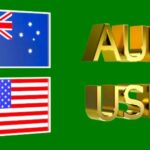Gold prices rise beyond $2,460 as US bond yields and the US dollar are under pressure ahead of the July NFP.
The gold price (XAUUSD) surged in Friday’s European session ahead of the US Nonfarm Payrolls (NFP) data for July, which will be released at 12:30 GMT. The official employment figures will reflect the present state of the labor market, influencing market speculation on a US Federal Reserve (Fed) rate cut in September.
Higher jobless claims and lower unit labor costs indicate a decline in US labor demand.
The US NFP report It is projected that 175K new workers were hired in July, down from the previous month’s total of 206K. The unemployment rate is predicted to continue at 4.1%.
Investors will also pay attention to Average Hourly Earnings data. Which is a critical indicator of wage growth that drives consumer spending and, ultimately, pricing pressures. The annual salary growth rate is expected to have slowed to 3.7% from 3.9% previously. With the monthly figure rising consistently by 0.3%. Softer-than-expected wage growth statistics may alleviate concerns about sustained inflation. Boosting Fed rate-cut prospects. On the contrary, stubborn numbers would make them weaker.
Meanwhile, the growing threat of an all-out war between Iran and Israel has boosted gold’s safe-haven appeal. Iran promises to retaliate. condemning the Israeli air attack that killed Hamas leader Ismail Haniyeh in Tehran.
Daily Market movers: Gold targets all time highs amid various tailwinds.
In Friday’s European session, gold prices rose higher, approaching $2,470. The precious metal hopes to reclaim all-time highs above $2,480 as US bond yields and the US dollar (USD) fall.
Furthermore 10-year US Treasury yields hit a new six-month low near 3.95%. As speculation that the Federal Reserve will begin lowering interest rates in September appears to be confirmed. Lower interest-bearing asset returns diminish the opportunity cost of owning non-yielding assets like gold. Meanwhile, the US Dollar Index (DXY). Which tracks the value of the Greenback versus six major currencies, edged lower to around 104.25.
The Fed appears OK with market expectations for interest rate decreases in September.
Fed Chair Jerome Powell’s dovish statement on interest rates spurred anticipation. That the Fed will switch to policy normalization in September. On Wednesday, the Fed held interest rates stable in the 5.25%-5.50% range. But said that rate decreases would be considered in September if inflation falls more or less in line with expectations, GDP remains reasonably solid, and the labor market remains consistent with present conditions.
Moreover In addition, a dismal United States (US) ISM Manufacturing Purchasing Managers’ Index (PMI) for July. The highest Initial Jobless Claims in 11 months for the week ending July 26. And lower preliminary Q2 Unit Labor Costs have increased the probability of an economic and labor demand slowdown.
The PMI Report revealed that industrial activity fell at a quicker rate, reaching 46.8. Individuals collecting unemployment benefits for the first time totaled 249K, exceeding predictions of 236K and the previous release of 235K. Unit Labor Costs, a crucial measure of the overall cost borne by companies for onboarding workers. Increased at a much slower rate of 0.9%, compared to predictions of 1.8% and the previous report of 3.8%.









